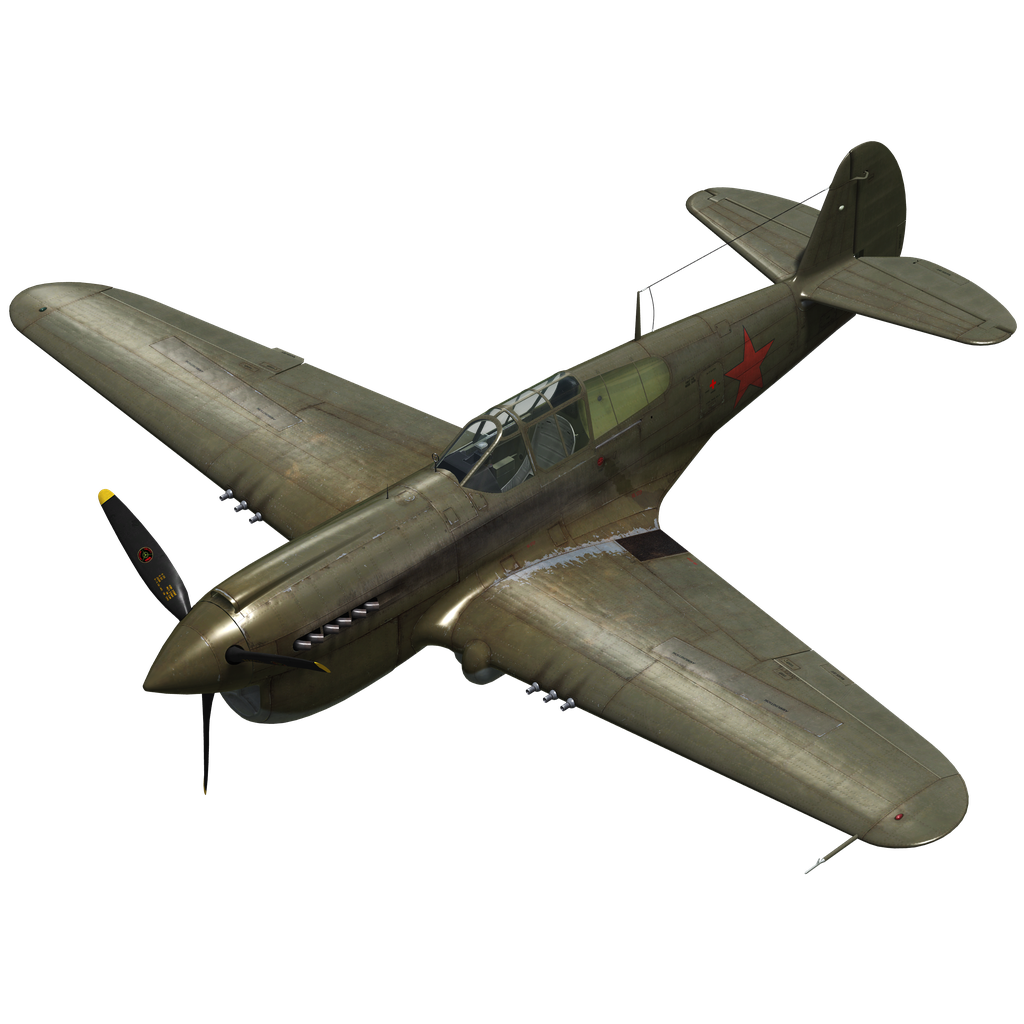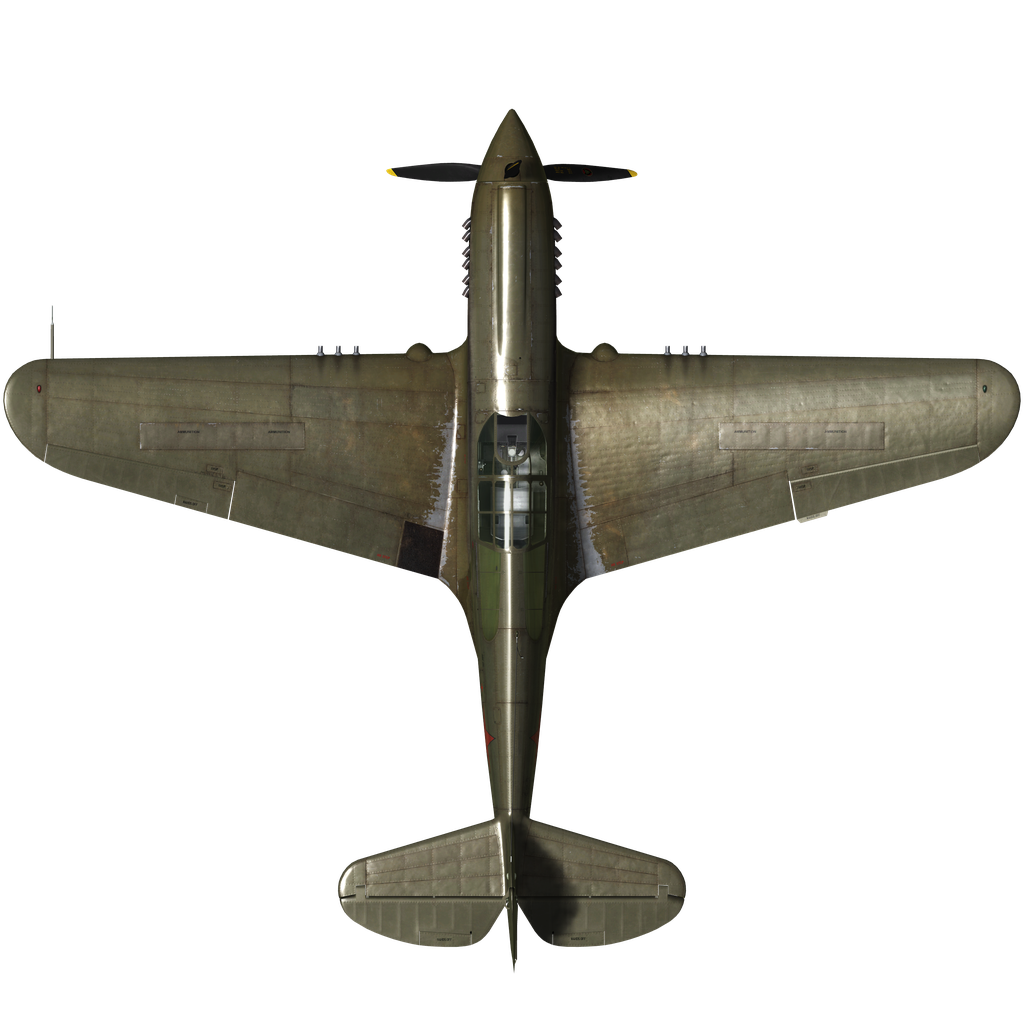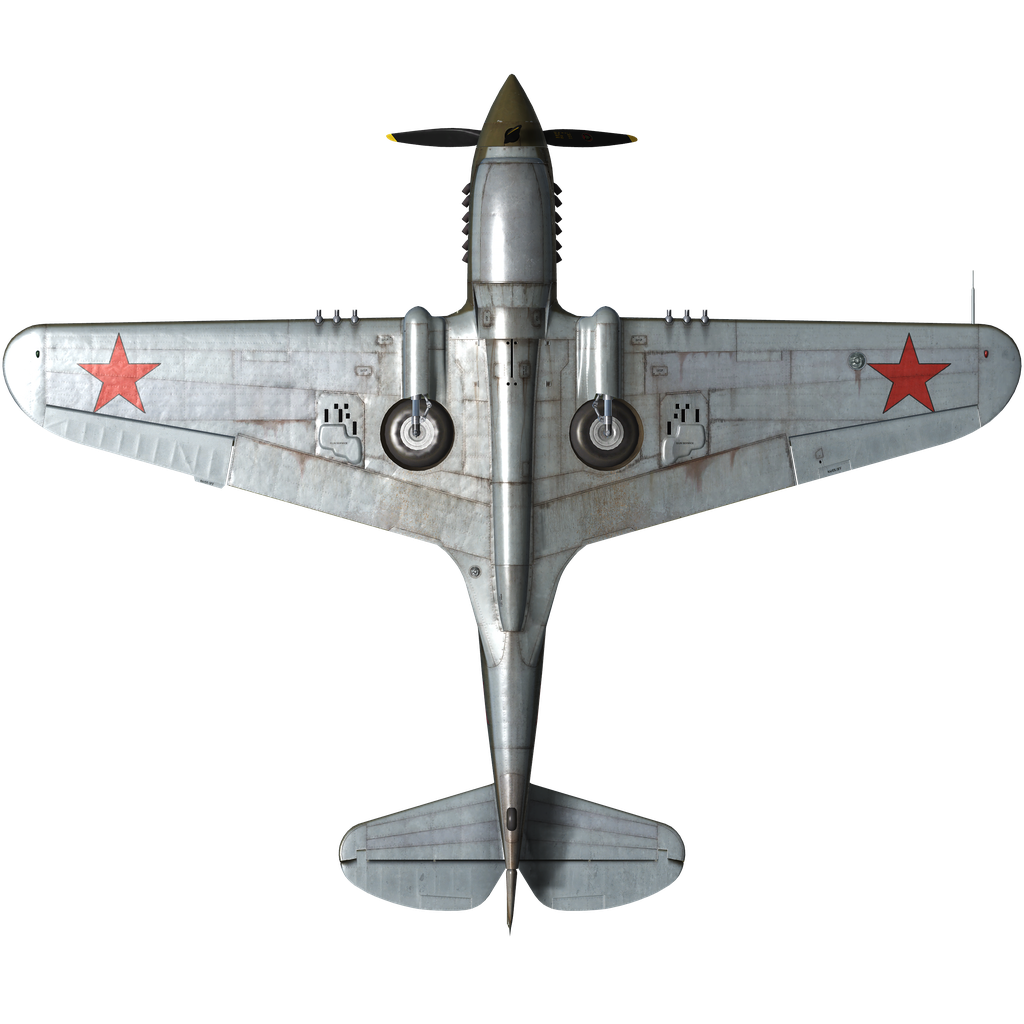By 1938, Curtiss-Wright's air-cooled Hawk 75 fighter, despite its good performance and many orders by various nations, did not fully meet modern demands. The modernization of the aircraft was carried out in such a way as to maintain as much as possible the commonality with the Model 75. As a result, the XP-40 prototype which took flight on October 14, 1938, received a new cowling and Allison water-cooled engine, and the airframe from the frame in front of the cockpit to the tip of the tail remained virtually unchanged. The wings, tail, and landing gear remained unchanged, but the new engine necessitated a redesign of the nose: the plane received a completely new type of nose with a characteristic "beard" that housed the water and oil coolers. In this form, it won the competition against all rivals. In 1939, it entered service under the designation P-40 and began production under the brand name "Hawk" 81.
100 Hawk 81s were ordered by France. After the surrender of France, they were delivered to Great Britain. The very first air battles revealed a huge number of shortcomings in the U.S. Army Air Corps, where it was the main and most popular fighter at the initial stage of the war, but in 1941-1942. It was this plane that participated in the battles as part of the air forces of the Allied countries on all fronts. Therefore, the company produced new modifications, one of which was the P-40E-1, called "Warhawk" in the USA. The model was intended for export to Great Britain, where it received the name "Kittyhawk", under which it became known in the USSR during deliveries under Lend-Lease.
The P-40E-1 was an all-metal cantilever monoplane with a low wing. The pilot in the cockpit was protected from the front by armored glass and plate, and from the rear by an armored rear wall. The structure was very durable and could withstand a lot of damage. The water-cooled Allison V-1710-39 engine, with a new, more compact transmission, maintained power of 1470 hp. for 5 minutes in "extraordinary" boosted mode, and a takeoff power of 1150 hp. Now it was possible to maintain this power (with a 30-minute limitation) up to an altitude of 3500 m. It turned out to be very sensitive to low temperatures and the quality of fuels and lubricants, so M-105 engines were installed on individual models of these aircraft in the USSR, and due to the different position of the propeller shaft, it was necessary to install a special adapter ring to align the propeller spinner with the contours of the fuselage.
The armament consisted of six heavy machine guns in the wing panels, and under the fuselage and wings, the aircraft could carry up to three 113-kg (250 lb) bombs or one 454-kg (800 lb) bomb on the central bomb rack. In the USSR, a 250 kg or 500 kg bomb was usually suspended under the fuselage or four unguided 82 mm rockets under the wing.
A total of 1,500 P-40E-1s were built and delivered to the air forces of Great Britain, Australia, Canada, New Zealand, and in significant numbers to the USSR.
The USSR first tried to exploit the positive aspects of this fighter — powerful weapons, long range and endurance, survivability, and good radio and instrumentation equipment by Soviet standards. The "Kittyhawks" were used where these qualities could be best used: in air defense, naval aviation, bombing and assault, escort, and reconnaissance (for this purpose the aircraft were modified by installing an aerial camera in the rear fuselage). However, Soviet pilots were not very fond of the P-40 due to its relatively low maneuverability, rate of climb, low top speed, and temperamental engine.
Used sources:
1. “American Warplanes of World War II” by David Donald, 1995
2. V. Bakursky. “Hawk is a P-40” Wings of the Motherland Magazine
3. Materials from the site airwar.ru






